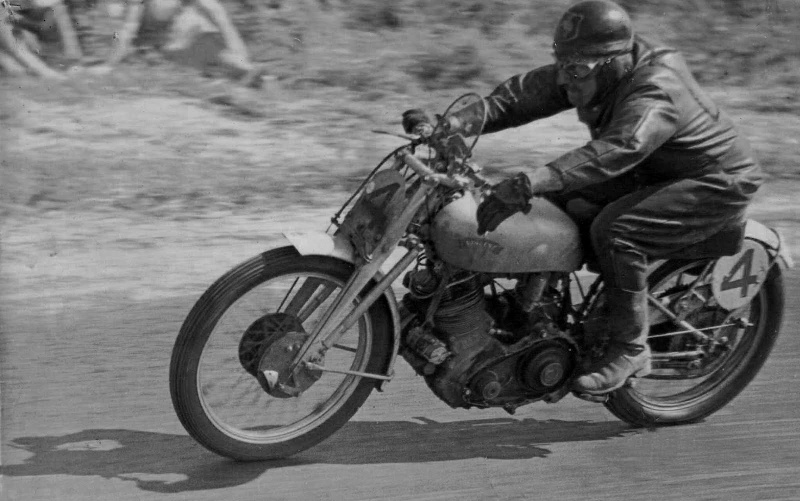Grey Flash Diary May 2012
The dry build continues. It could be argued that I am taking my time over this build, however it’s never the only job in the workshop, and work progresses as other jobs stall or become frustrating. The engine plates around the gearbox were calling for their RFM and I needed to put it in position for two reasons, firstly to help sort the footrest plates and thus the special brake and gearbox levers, and secondly I need a jig to build my new wheels in. The RFM that came with the Grey Flash parts is one of early 1948 vintage. In that year George Brown was probably hard at work testing and circulating round Gransden Airfield (Under 20 miles from me) and racing his 500 speedway special with B & C parts, but however you look at it,1948 means it pre dates the production Comet and Flash, and certainly this RFM has a fixed single cable LH abutment which is a ‘B’ characteristic (NB. I believe the first post war Meteors were produced late in 48). The production Flash and Comet of course were series ‘C’, first appearing in the 49 autumn show. (A fact I have often had cause to be pleased about since that single fact allows the Comet to race in the BHRC up to 49 class). However I must use this RFM, not only because its in fetching grey stove paint and its number matches the UFM, but because someone has cut a big chunk out of the pivot casting and removed the rear seat arm ‘ears’ just as was often done in the late 40’s during race preparations. This means that since I have no intention of cutting or altering any other standard RFM I shall use this one even if its a bit ‘early’. Most Flashes (But not the 1950 TT ones who used a combined LH sprocket and drum) originally had two drums and thus the brake transmitted via cable to the RH side and then by rod & shaft, however many have been modified with one drum and a sprocket carrier. For example Glyn Baxter’s Flash is arranged like that in J B’s book ‘Original Vincent’ and in that example it uses cable all the way to the brake arm and the redundant RH lower seat ear as an abutment), This is ideal for me since I do not have a RH abutment anyway. However, a further complication arises since as noted above I also have no seat ears on the RFM so I will have to fabricate a removable one on the RH side in the position that a single ‘ear’ would occupy. And it will possibly disappear beneath (or be part of ) the racing plates. The ‘Elders and the Wise ones’ will discuss this small irregular arrangement no doubt, but I believe that preservation and re-use nowadays must generally take precedence over minor debatable points of authenticity. (And it saves a lot of weight and complication-which is why it was often done in the past). I am pleased to note the RFM came with 2 good full alloy chain click adjusters, my Road Comet has been after a pair for years, and will happily donate her ‘D’ hex head bolts in exchange. I have cleaned out the 9/16 X 20tpi rear stand threads as these will accommodate the paddock stand mushrooms I shall be turning up and fitting there. I have removed the brake lug from the twisted F25/7 that I was given and (with the aid of the inevitable order to Mallard Metals) have made, bent and modified the other parts to braze up together thus making an F25/9AS racing brake assembly. As with the RFM above building up a machine like this often uses parts that would otherwise be scrap, I rarely throw any Vincent part away, however damaged, as it will generally be useful somewhere to somebody sometime, and after all, were not the best Vincent’s were made out of wrecks? (Nero et al)


